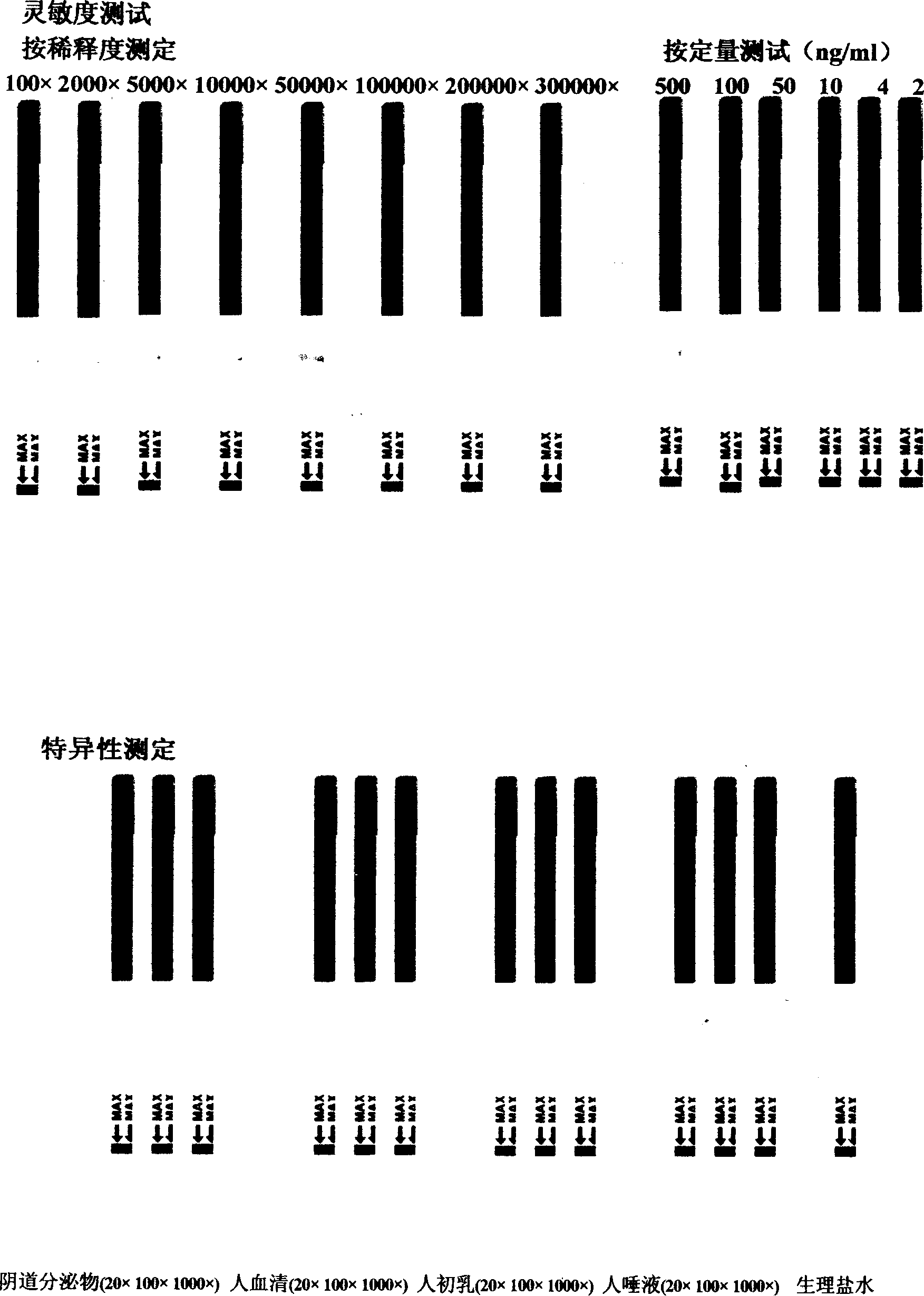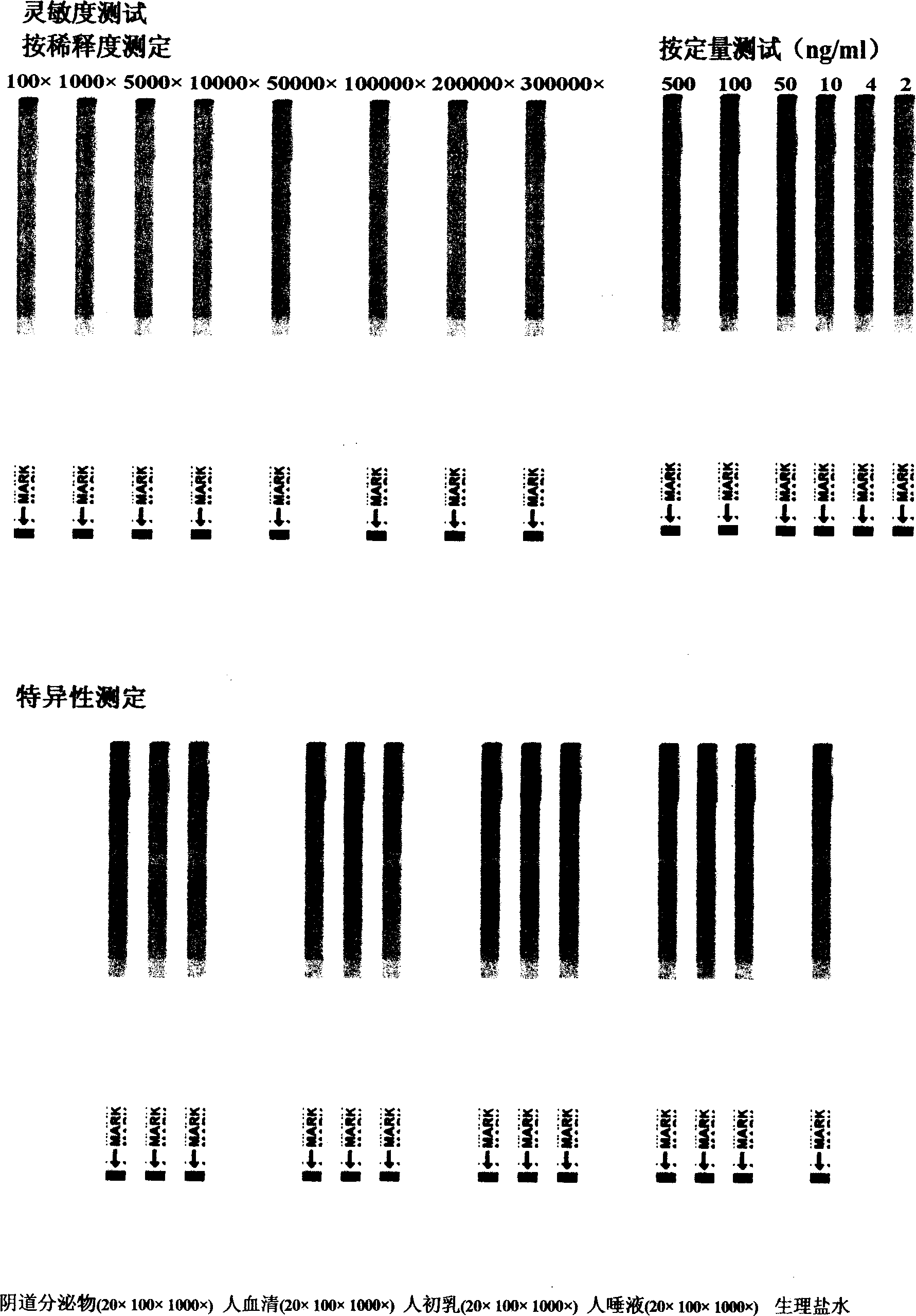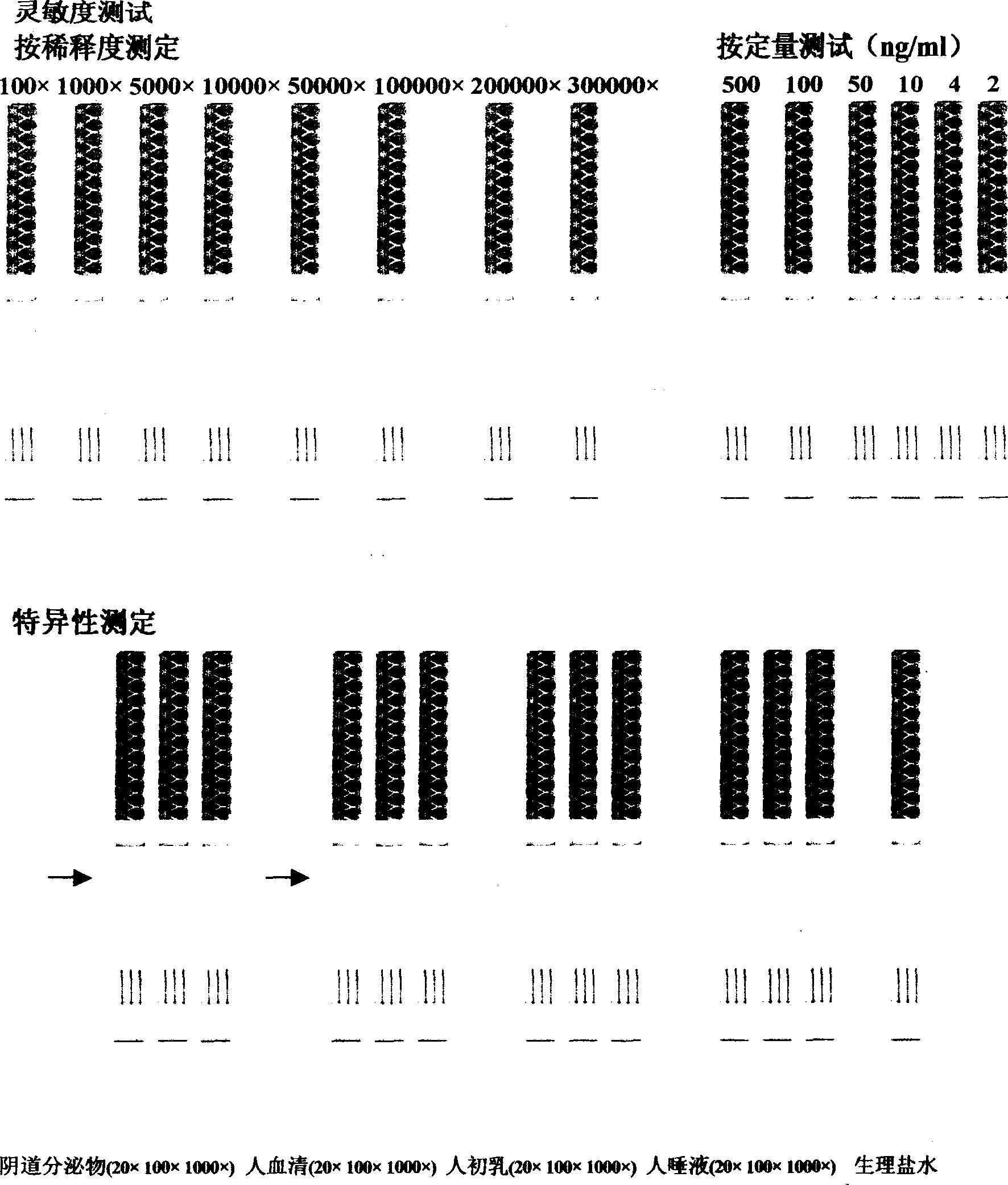Antihuman seminal specific protein P30 detection reagent strips and monoclone antibody therewith
A monoclonal antibody and specific protein technology, applied in biological testing, immunoglobulin, specific peptides, etc., can solve problems such as inspection errors, anti-human semen specific protein P30 antibody specificity not fully achieved, etc.
- Summary
- Abstract
- Description
- Claims
- Application Information
AI Technical Summary
Problems solved by technology
Method used
Image
Examples
Embodiment 1
[0053] Example 1 Preparation of CGMCC 0971 hybridoma cell line A7 and CGMCC 0972 hybridoma cell line H3F3 producing anti-human semen-specific protein P30 monoclonal antibody:
[0054] According to Zhang Qi, Yan Hong, Wang Xiangju's "Chinese Journal of Forensic Medicine" 1990; 5(2): 72-76 pages "Establishment and preliminary application of hybridoma cell line secreting anti-human semen-specific protein P30 monoclonal antibody". After testing, a number of hybridoma cell lines that react only with human semen, purified human P30 fluid and human prostatic fluid were prepared, including CGMCC 0971 hybridoma cell line A7 and CGMCC 0972 hybridoma cell line H3F3. The antibodies produced are all mouse IgG1 subclass, and the titers are respectively, H3F3: 320 times of culture supernatant, ascites 1.28×10 5 times; A7: culture supernatant 32 times, ascites 1.0×10 4 times.
Embodiment 2
[0055] Example 2 Preparation of anti-human semen-specific protein P30 colloidal gold immunochromatography detection reagent strip
[0056] ①Ascites monoclonal antibody preparation: A7 and H3F3 cell lines were taken out from liquid nitrogen, revived and cultured by conventional methods. Inject an appropriate number of cultured A7 and H3F3 cultured cells into the peritoneal cavity of the mouse, kill the mouse 7-10 days later or when it is observed that it can be slaughtered, and collect the ascites of the mouse respectively.
[0057] ②Isolated and purified anti-human semen-specific protein P30 antibody: carried out by conventional n-octanoic acid plus ammonium sulfate method or affinity chromatography method, the latter specifically: add 1 / 10 volume of 1.0mol / L Tris-HCl to mouse ascites , pH 8.0 buffer solution, then add saturated ammonium sulfate solution or solid ammonium sulfate to 50% saturation, after standing for 2hr, centrifuge, precipitate with physiological PBS (20mmol / ...
PUM
 Login to View More
Login to View More Abstract
Description
Claims
Application Information
 Login to View More
Login to View More - R&D
- Intellectual Property
- Life Sciences
- Materials
- Tech Scout
- Unparalleled Data Quality
- Higher Quality Content
- 60% Fewer Hallucinations
Browse by: Latest US Patents, China's latest patents, Technical Efficacy Thesaurus, Application Domain, Technology Topic, Popular Technical Reports.
© 2025 PatSnap. All rights reserved.Legal|Privacy policy|Modern Slavery Act Transparency Statement|Sitemap|About US| Contact US: help@patsnap.com



